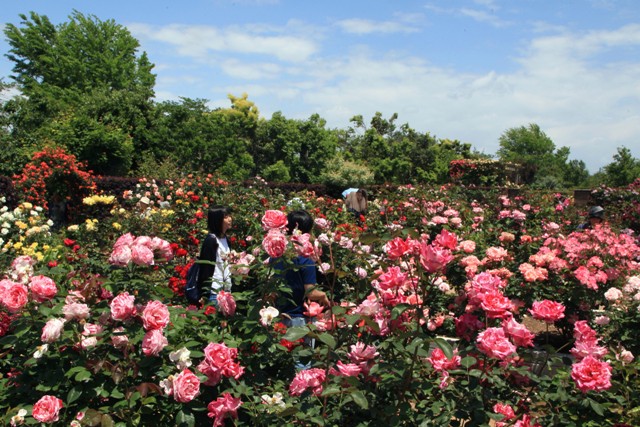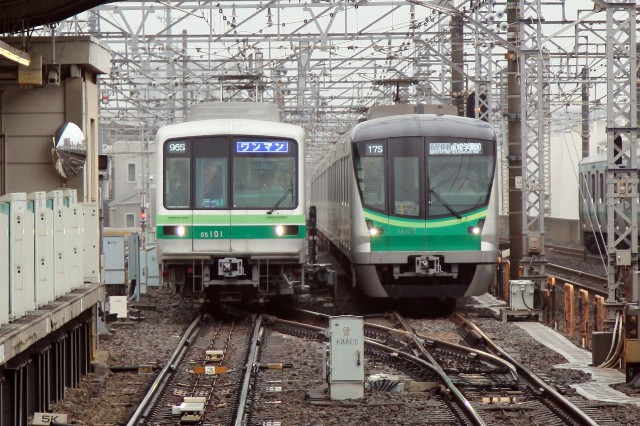I visited Mt. Takao after a long time. What's new with this holiday mountain? I found that the number of foreign visitors has drastically increased. For instance, I saw many foreigners at a beer restaurant near the top of the mountain, where customers can see the beautiful scenery while drinking superb beers and foods.
To visit this holiday mountain, you cannot go by car. Visitors have three choices to get to the summit... walking, taking a lift or a funicular. As a rail fan, I recommend you take a funicular named Takao Tozan Dentetsu (Takao Mountain Climbing Electric Railway). Connecting Kiyotaki and Takaozan stations, its route length is 1,020 meters. The track was originally completed by Takao Kosaku Tetsudo (Takao Cable-railway) in 1927. The height difference between the two stations is 271 meters. The gauge size is 1,067 millimeters. The operation interval is 15 minutes. It takes about 6 minutes from Kiyotaki to Takaozan station. The funicular passes through two tunnels on the route.
There are two rail cars namely Aoba (green leaves) and Momiji (maple) on the track. Momiji has a yellow and red colored body, which stands for the beautiful autumn leaves on the mountain. Momiji can accommodate 135 passengers. The inclination of the track is not so large at Kiyotaki station, but it gets steeper and steeper toward the top of the mountain, specifically after passing through the mid-course. Eventually, the angle reaches the maximum (31 degrees 18 minutes), which is the steepest track in Japan, just before Takaozan station.
To visit this holiday mountain, you cannot go by car. Visitors have three choices to get to the summit... walking, taking a lift or a funicular. As a rail fan, I recommend you take a funicular named Takao Tozan Dentetsu (Takao Mountain Climbing Electric Railway). Connecting Kiyotaki and Takaozan stations, its route length is 1,020 meters. The track was originally completed by Takao Kosaku Tetsudo (Takao Cable-railway) in 1927. The height difference between the two stations is 271 meters. The gauge size is 1,067 millimeters. The operation interval is 15 minutes. It takes about 6 minutes from Kiyotaki to Takaozan station. The funicular passes through two tunnels on the route.
There are two rail cars namely Aoba (green leaves) and Momiji (maple) on the track. Momiji has a yellow and red colored body, which stands for the beautiful autumn leaves on the mountain. Momiji can accommodate 135 passengers. The inclination of the track is not so large at Kiyotaki station, but it gets steeper and steeper toward the top of the mountain, specifically after passing through the mid-course. Eventually, the angle reaches the maximum (31 degrees 18 minutes), which is the steepest track in Japan, just before Takaozan station.









